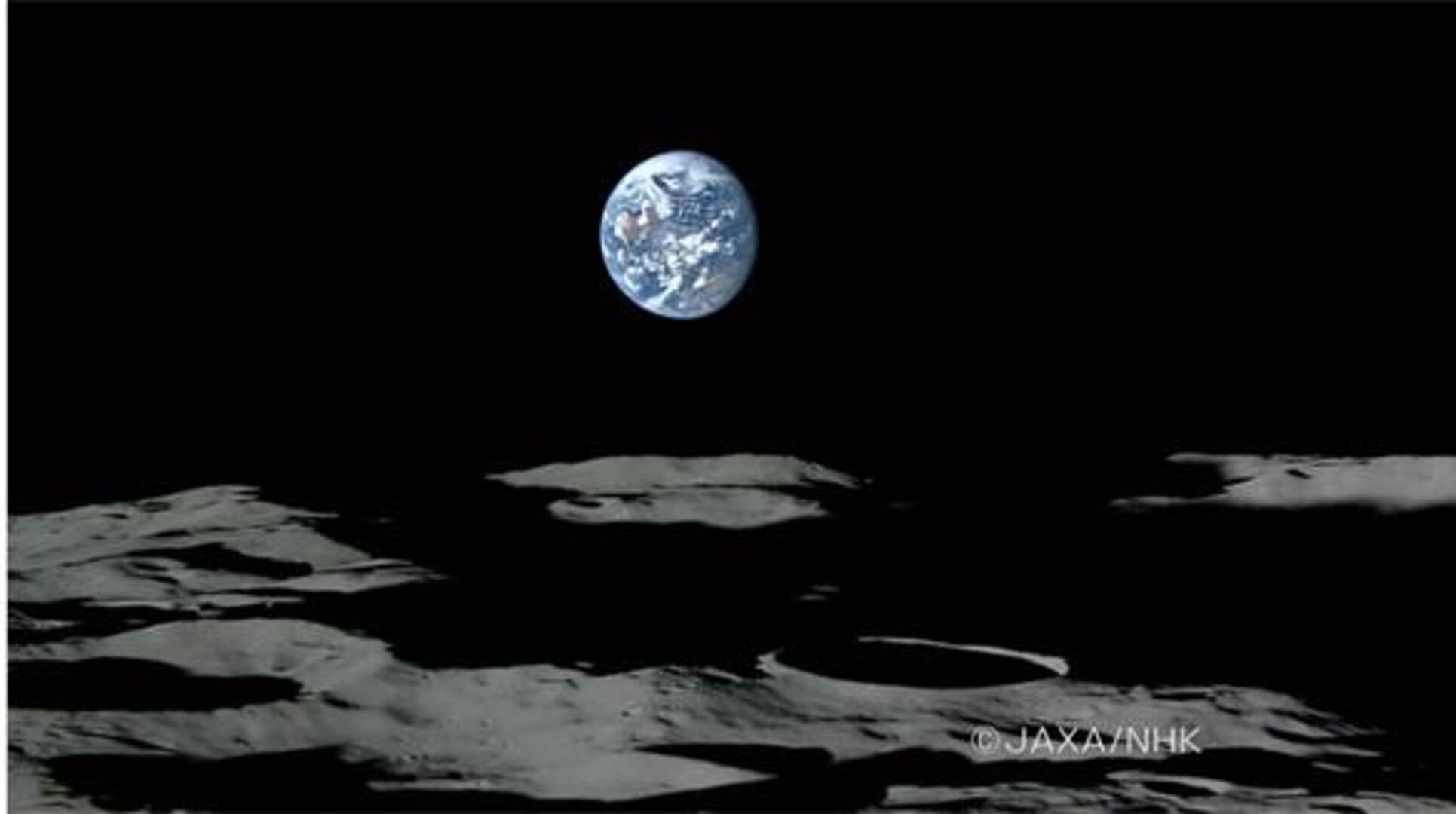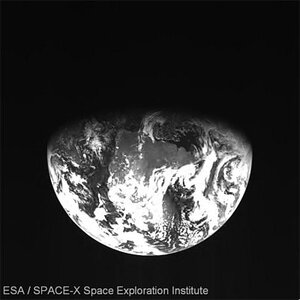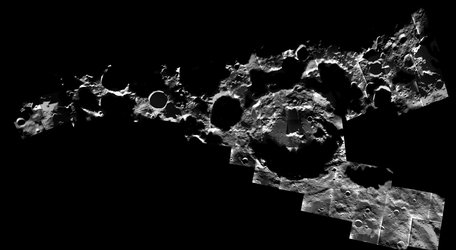Exploring the lunar South Pole
Lunar Lander will touch down near the Moon’s South Pole. There are several reasons for choosing to land in this location.
The South Pole has been identified as a possible future location for a human outpost and the poles are the new frontiers for lunar exploration missions.
Past missions, like NASA’s Apollo and Surveyor or the Soviet Luna, landed near the equator, no further than 40° latitude. The terrain near the equator is generally flatter compared to the rugged moonscape of the south polar region. Lunar Lander will have to navigate its way past high mountains and deep craters to reach its landing site.
The polar regions have been observed by spacecraft such as ESA’s SMART-1, India’s Chandrayaan and Japan’s Kaguya. NASA’s Lunar Reconnaissance Orbiter is still flying over the South Pole region at an altitude of only 30 km, collecting a wealth of data. This information will be used to prepare the Lunar Lander mission and to understand the lunar environment.
Power of the Sun
Lunar Lander relies exclusively on solar power to operate its instruments, so maximising its exposure to the Sun is vital. Unlike Earth, which turns on its axis every 24 hours, the Moon takes about 30 days to make a complete rotation. This means that days and nights on the Moon last two weeks.
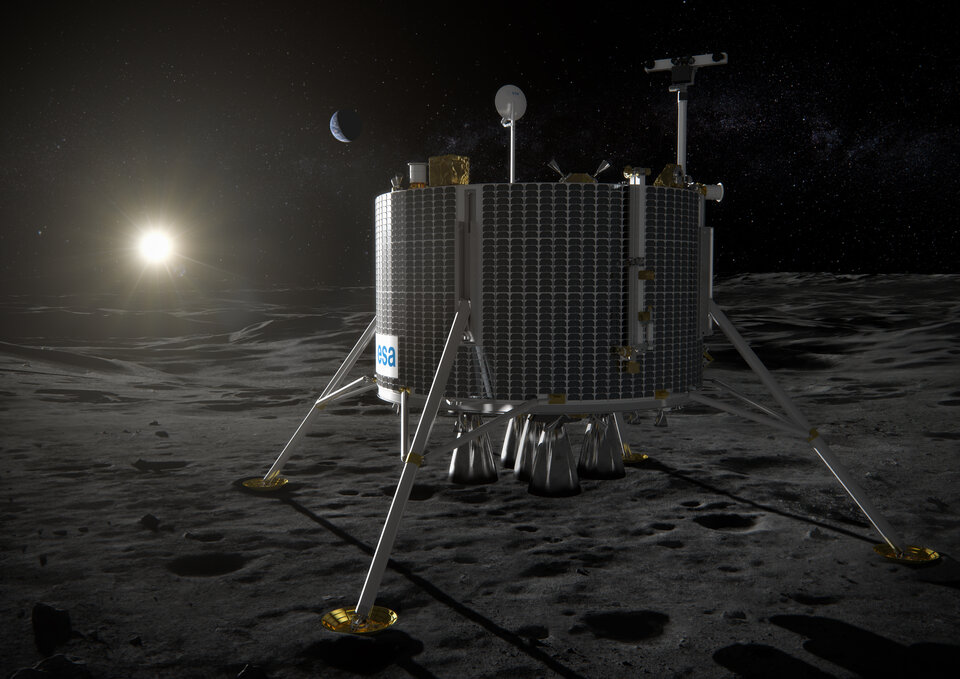
Just as at Earth’s poles, the lunar polar regions experience extended periods of sunlight. The Sun remains very close to the horizon throughout the year, so it is important for Lunar Lander to touch down on high ground such as a crater’s rim. That way, the craft will not be cut off from solar power and communication with Earth by the surrounding terrain.
These patches of higher ground tend to be small, so Lunar Lander will have to land very accurately. During landing, the vehicle will keep a watchful eye on any shadows that might block solar power generation as well as hazards, such as steep slopes or large boulders that could endanger the lander as it comes to a rest.
Science and exploration in partnership
As well as being an important site for future exploration, the South Pole offers opportunities for science and exploration.
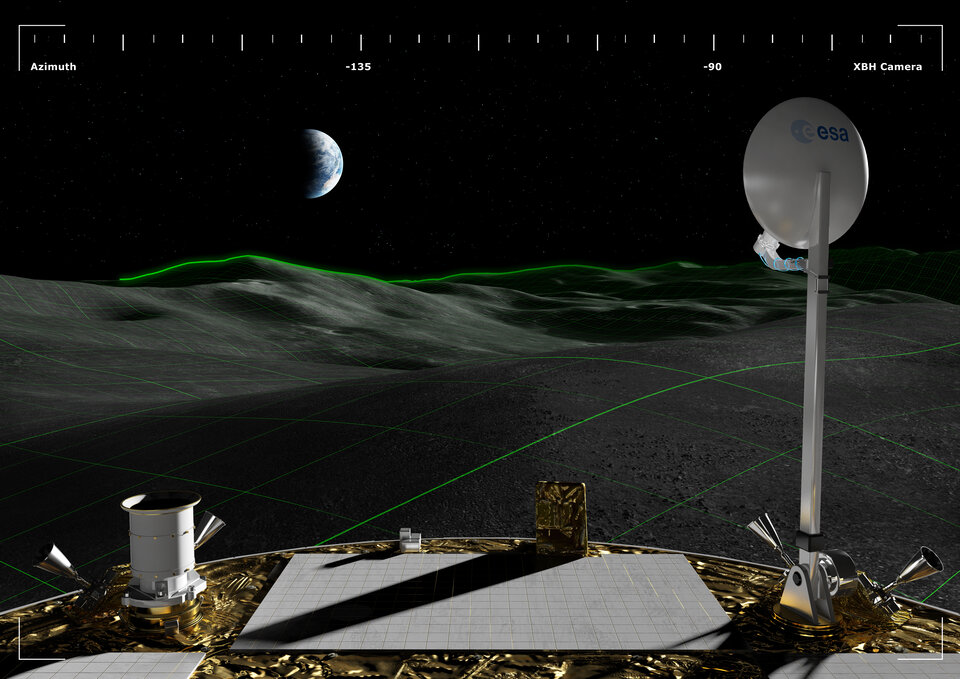
Recent orbiting missions have shown that the poles may contain water and it is believed that solar wind particles are trapped there. The water and volatile chemicals hold information on the history and chemistry of the inner Solar System and could even provide resources for future exploration.
Measurements made by Lunar Lander on the surface will confirm measurements made from orbit.
The complex interaction of radiation, illumination, plasma and dust found at the poles will allow Lunar Lander to work as a laboratory for dust plasma physics, providing insight into fundamental processes on all airless bodies such as the Moon, Mercury and asteroids. Understanding the dusty environment and its effects is important for future exploration missions.
The South Pole is at the edge of the Aitken basin, the largest impact basin in the Solar System. The surface here is made of material from deep within the lunar crust and mantle. Probing these materials could provide insights into planetary formation and reveal its potential for utilisation as a resource for future missions.


